Introduction
After the dreamy skies and floating cities of BioShock Infinite, my next gaming stop was much closer to the ground—dusty, loud, and full of bullets. Yes, my friends, the next game on my “holiday gaming therapy list” was none other than Counter-Strike 2.
Now, before you ask why, the answer is simple: it was next in my Steam library queue, staring at me like an old friend waiting for a call. Plus, ten years ago, Counter-Strike wasn’t just a game for me—it was the post-work stress relief ritual. I didn’t have a gaming PC back then (not even close), but that didn’t stop me from spending late evenings on my humble home setup, blasting away digital terrorists after long workdays.
Back then, the graphics were blocky, the textures looked like someone painted them with a broom, and yet… it was glorious.
So, imagine my face when I realized there was now Counter-Strike 2—with upgraded graphics, new effects, and Valve’s shiny Source 2 engine promising smoother gameplay and prettier smoke grenades.
A few clicks later and about 60 shekels poorer, I was downloading it.

Installation and Setup
Installing CS2 on Linux was refreshingly simple, no sacrifices to the tech gods required. Steam did its magic, and the only manual tweak I had to make was enabling compatibility mode.
Even no Compatibility needed:
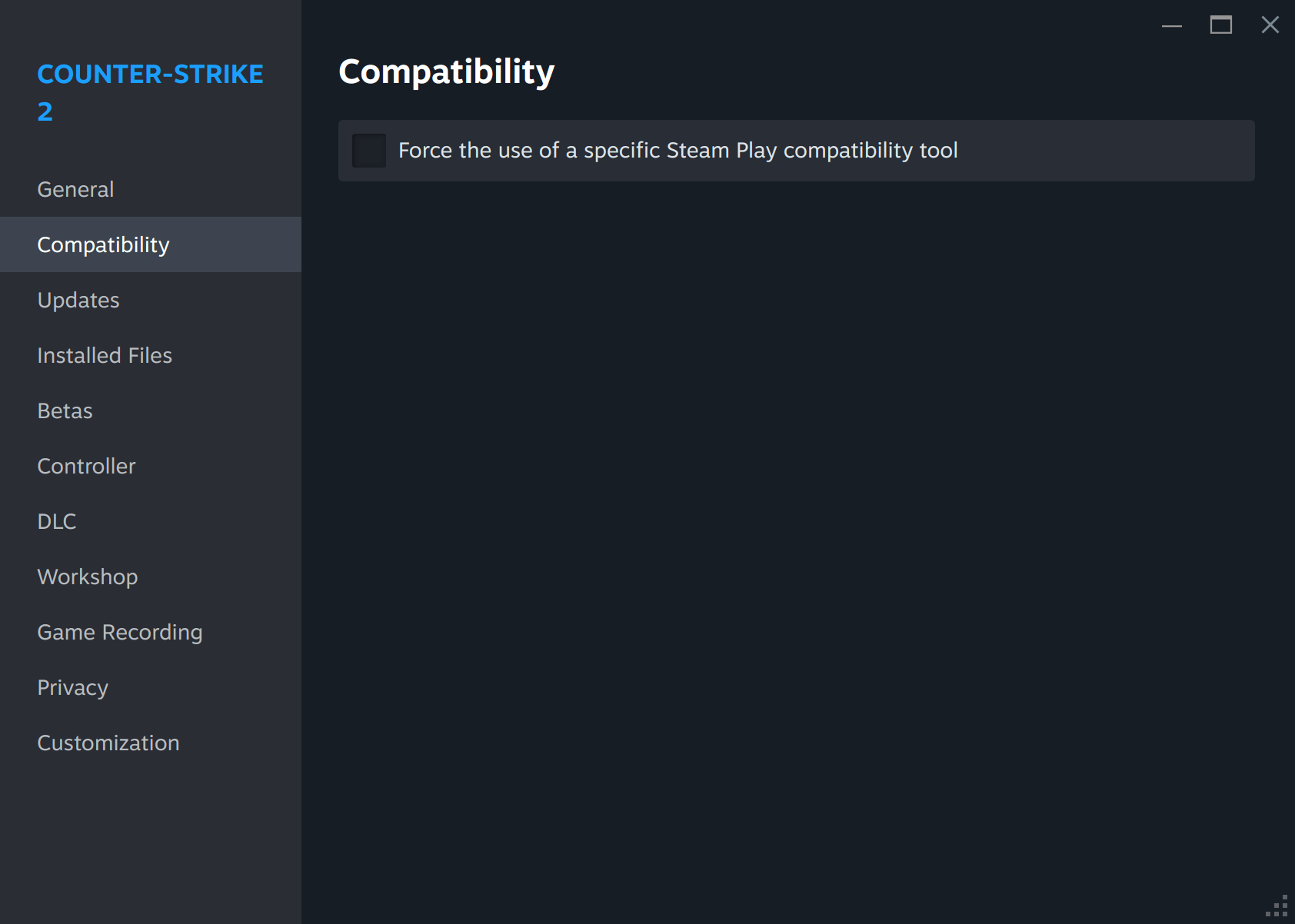
And let me tell you—the visual upgrade is instantly noticeable. Lighting, shadows, textures—everything feels richer and more dynamic. The Source 2 engine gives the game a cinematic crispness that old-school Counter-Strike: Source and Global Offensive could only dream of.
I stood for a good minute just admiring the environment like some lost tourist in Dust 2. Then I realized I should probably stop sightseeing before someone headshots me.
First Impressions
The controls felt immediately familiar, as if my fingers still remembered the old rhythm from a decade ago.
Move, aim, shoot, reload, curse in three languages. Perfect muscle memory.
Performance-wise, my system didn’t even flinch. In Full HD (1080p) resolution, I was cruising between 150–180 FPS—a smooth, buttery experience that would make even old LAN-party veterans proud.
Naturally, I couldn’t resist pushing things further.
I switched the graphics settings to High and Ultra, because what’s the point of having a GPU if you don’t occasionally make it sweat?

The result? Still an incredibly stable 80–120 FPS. My GPU fans spun up, made a noise that sounded like a small helicopter, and yet, everything ran flawlessly.
Feeling brave, I cranked the resolution to 3840x2160 (my monitor’s native).
And surprisingly… the frame rate barely dipped!
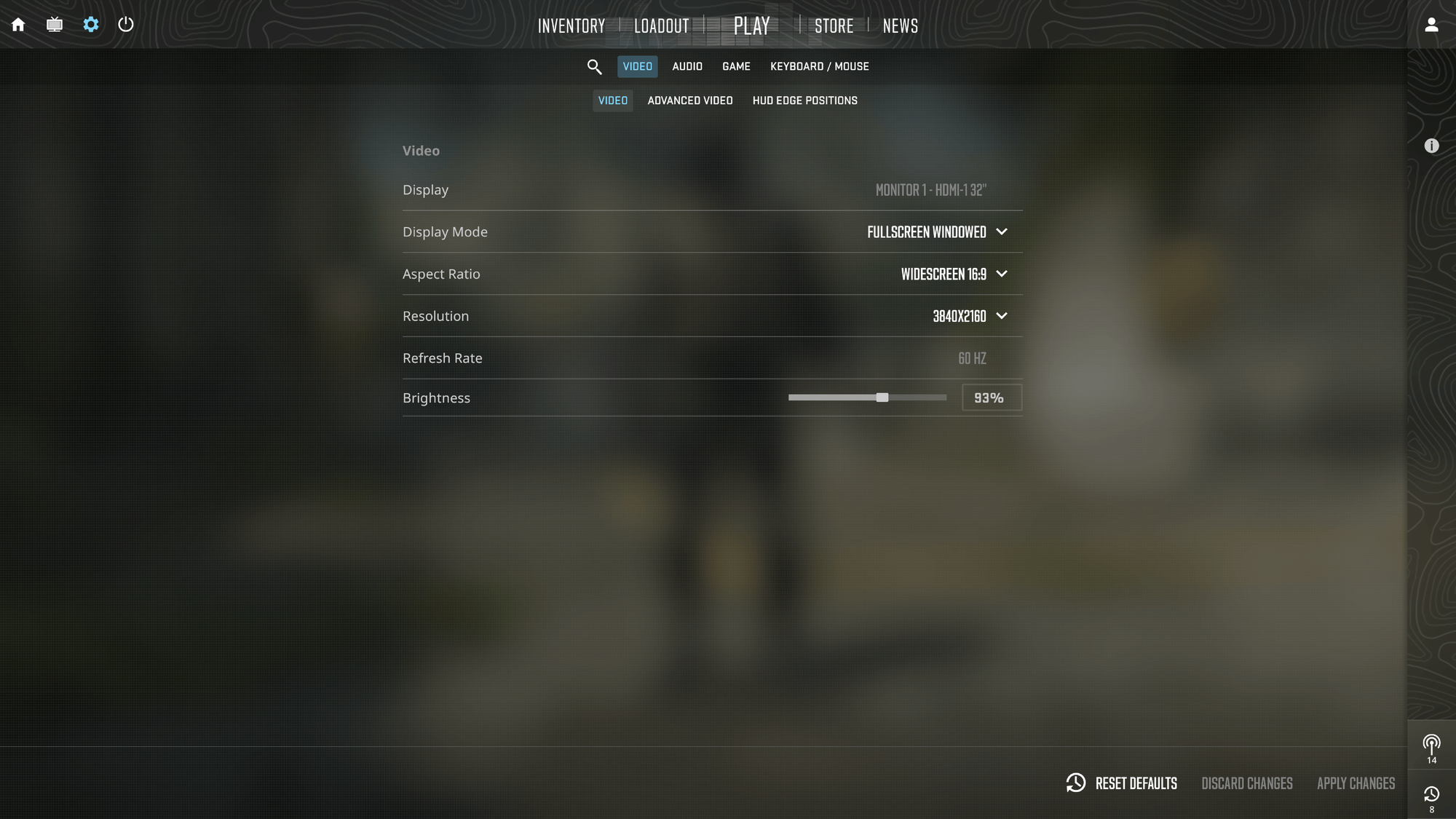
Sure, it dropped a little, but the game still felt smooth and responsive—like it was built for Linux gaming.
At this point, I was both impressed and suspicious. Was CS2 secretly optimized for my setup? Or was my 2080 Ti just flexing its muscles after spending too long in AI workloads?
Searching for a Benchmark
Being the tech geek I am, I couldn’t stop at “feels smooth.” I wanted numbers, graphs, and benchmarks.
So, I went hunting for a Counter-Strike 2 performance test.
And boy, did I fall down the rabbit hole.
Turns out, the CS2 community is already packed with mods, custom maps, and all kinds of workshop tools. Everything from performance benchmarks to weird meme maps that make you fight chickens in slow motion (yes, really).
On the game’s Steam Workshop page, I simply typed “FPS” into the search bar and found what I needed:
“CS2 FPS Benchmark – Dust Edition”
A community-made benchmark map designed to stress-test your system using explosions, smoke grenades, bots, and environmental effects—all running in a familiar Dust 2 setting.


Subscribing to the benchmark was as easy as clicking the little green “+” icon. Steam downloaded it automatically and added it under the Workshop section of my CS2 Play menu.
Running the Benchmark
When I launched the map, I was greeted by an empty desert—the Dust 2 map stripped down for pure testing.

Then the magic started.
The benchmark kicked off automatically, spawning explosions, smoke grenades, and a flurry of effects designed to push the engine to its limits.
It was like watching a Michael Bay film at 120 FPS.
As the test ran, I could see my FPS counter bouncing wildly. The smoke grenades, especially, are known for hitting GPU hard—thanks to the new volumetric smoke simulation introduced in CS2.
After a few minutes, the test wrapped up and printed the results directly on the screen.
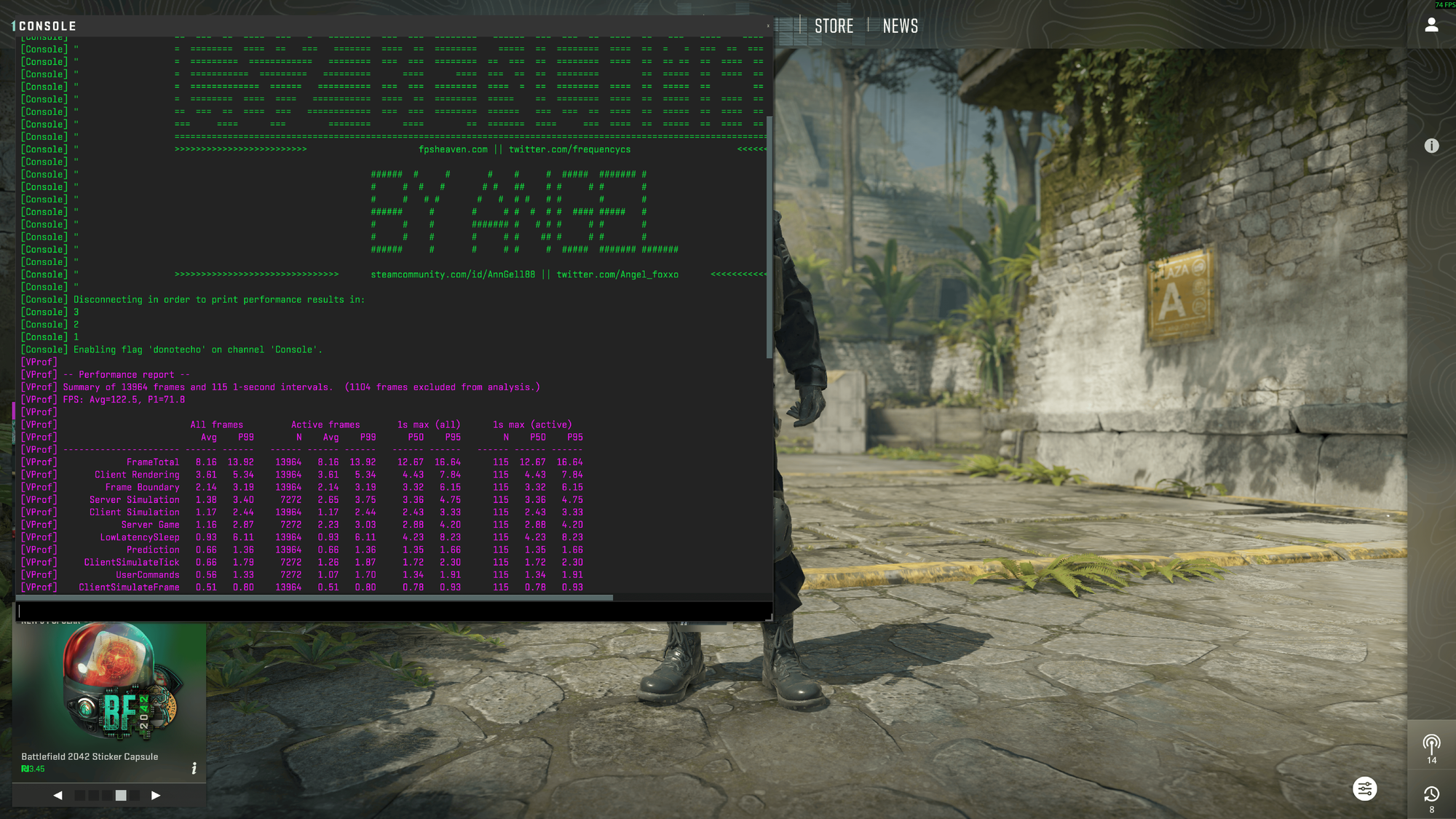
Results
Here’s what I got from two benchmark runs:
| Resolution | Settings | Avg FPS | 1% Low FPS |
|---|---|---|---|
| 1920x1080 | Ultra | 162 | 115 |
| 3840x2160 | Ultra | 135 | 83 |
Not bad at all!
The key metric here—1% Low FPS—tells you how low your frame rate dips during the most demanding 1% of gameplay. It’s basically a “worst-case scenario” measurement.
In both cases, even the lowest FPS was high enough for smooth, responsive gameplay. No stutters, no hiccups, no frame drops that could cost a match.
And again, the difference between Full HD and 4K wasn’t nearly as drastic as I expected. Looks like CS2 scales beautifully with resolution—proof that Valve did something right this time.
The Feel of It
CS2 doesn’t just look better—it feels better.
The weapon handling has a subtle smoothness that’s hard to describe until you play. The recoil, the sound design, even the dust particles make the environment feel alive.
And the smoke grenades? They’re basically small weather systems now. You can shoot through them, watch bullet holes appear in the mist, and see the smoke dynamically react to the chaos around it.


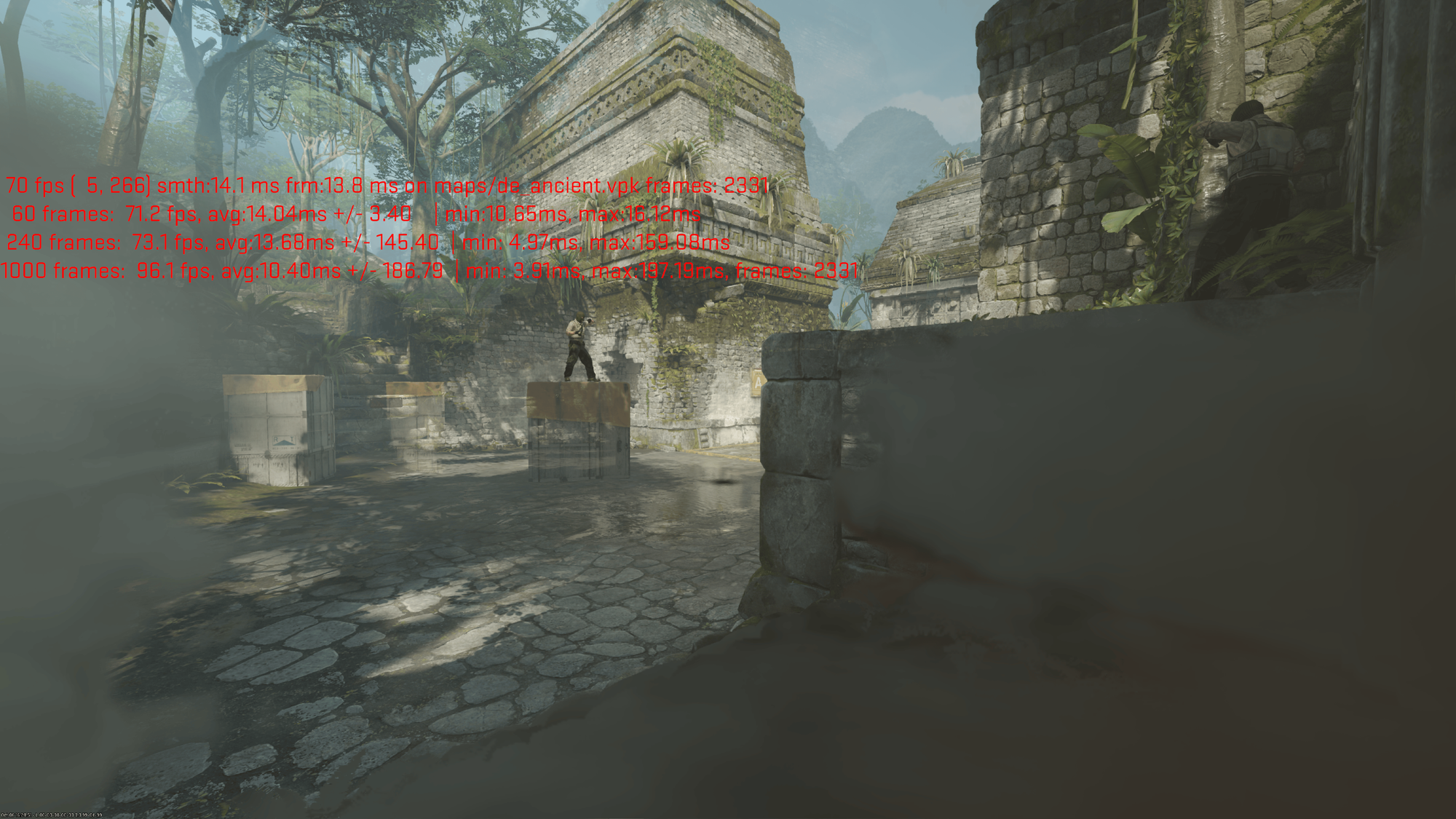

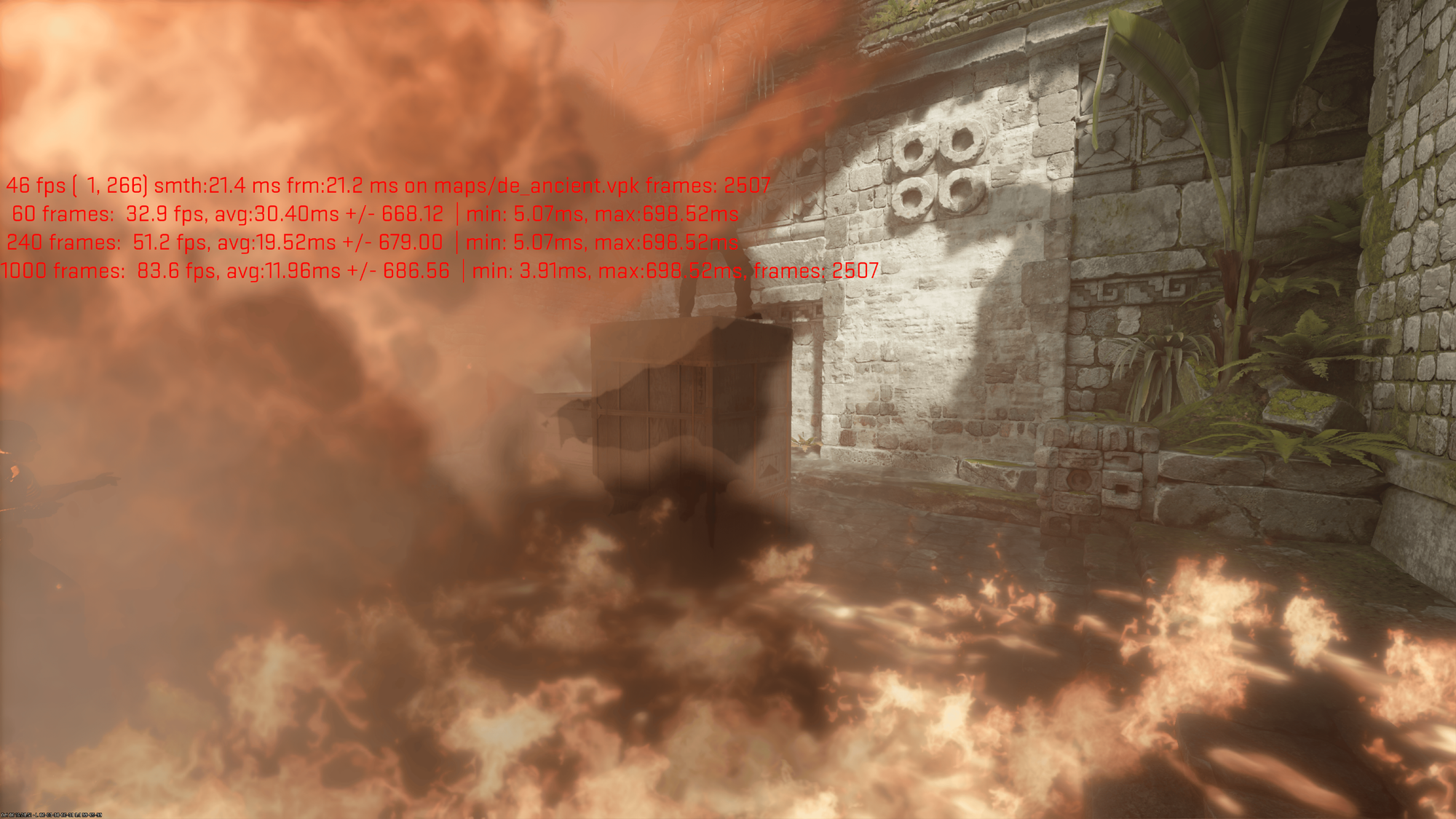
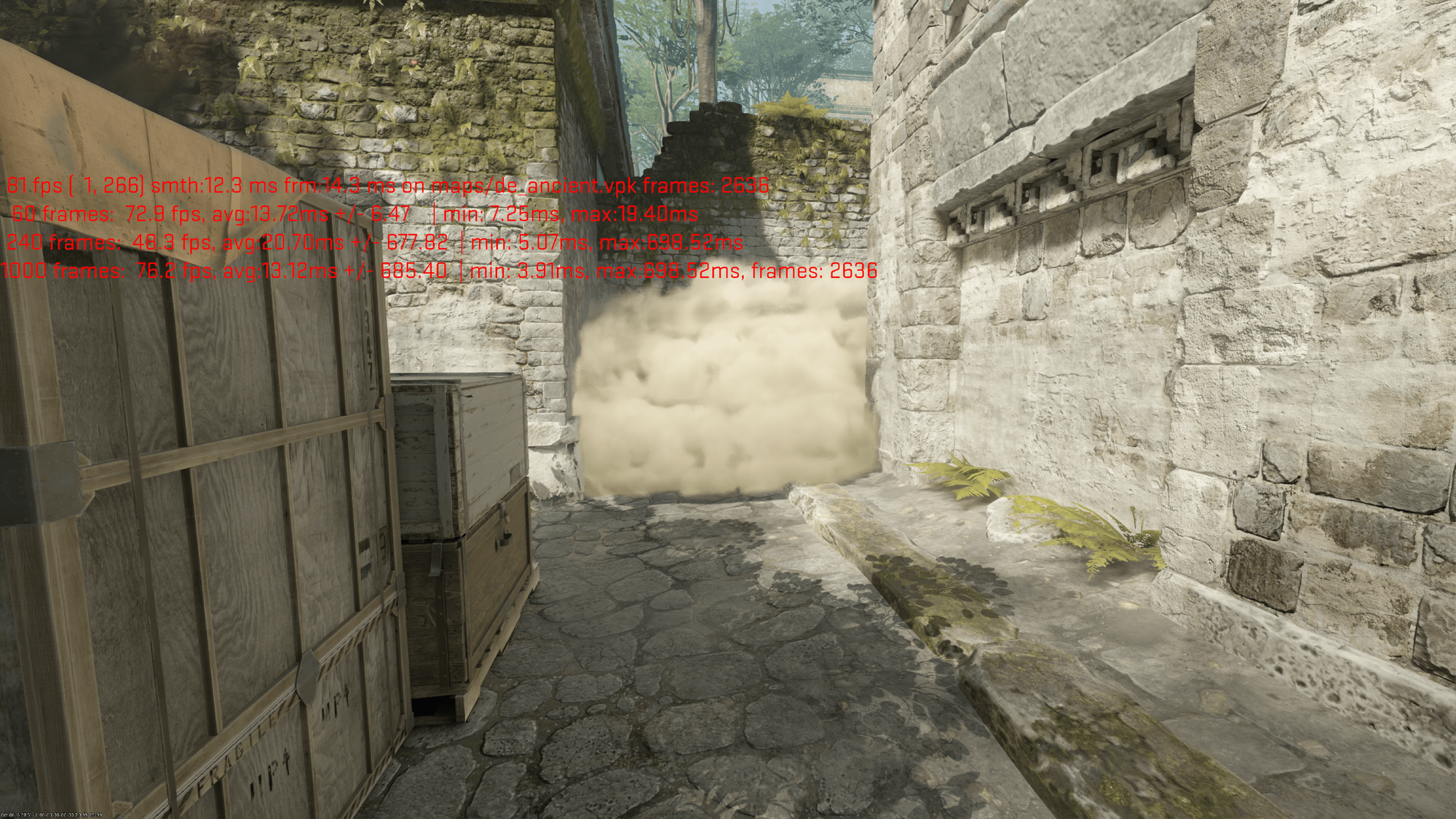
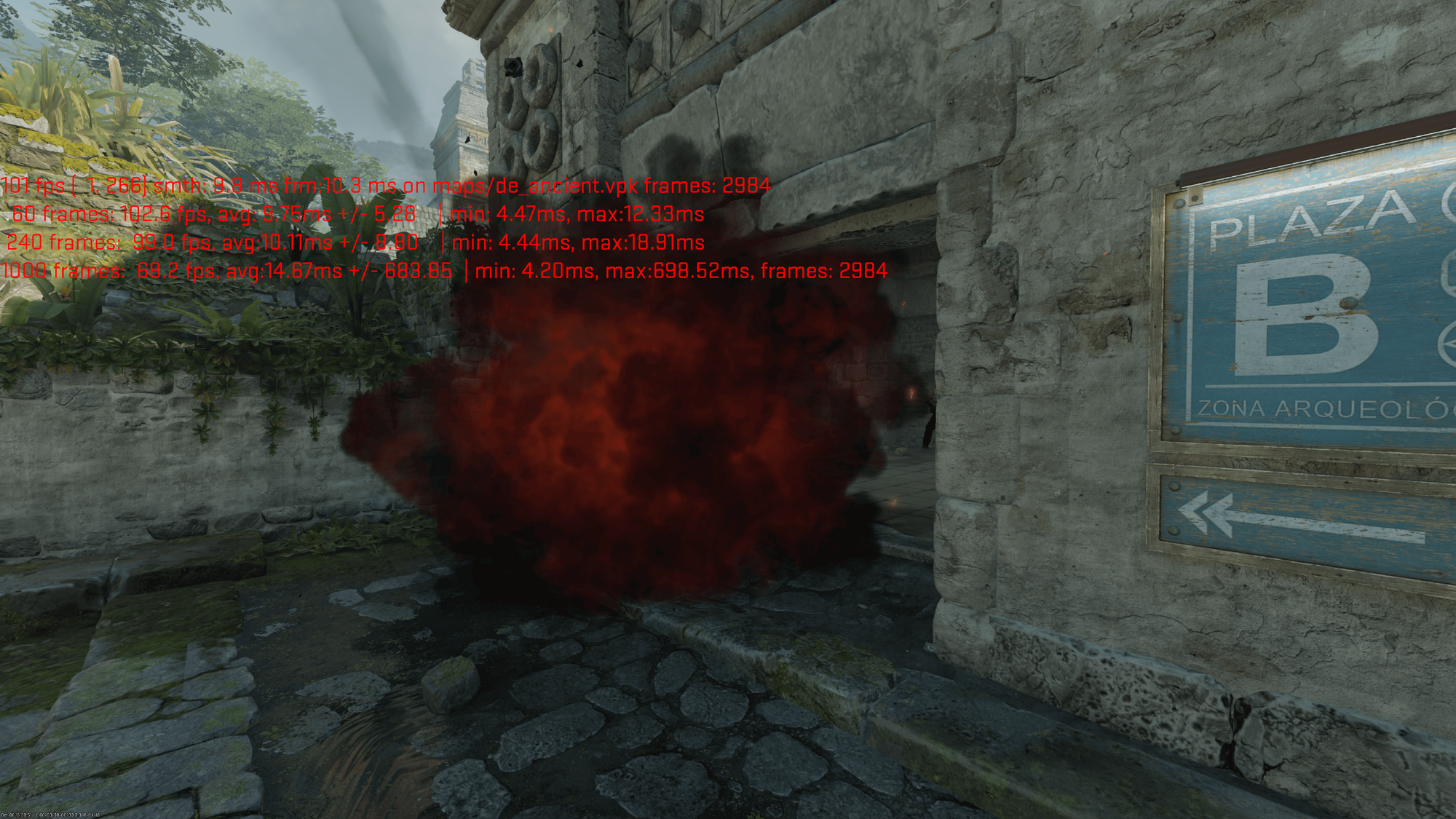
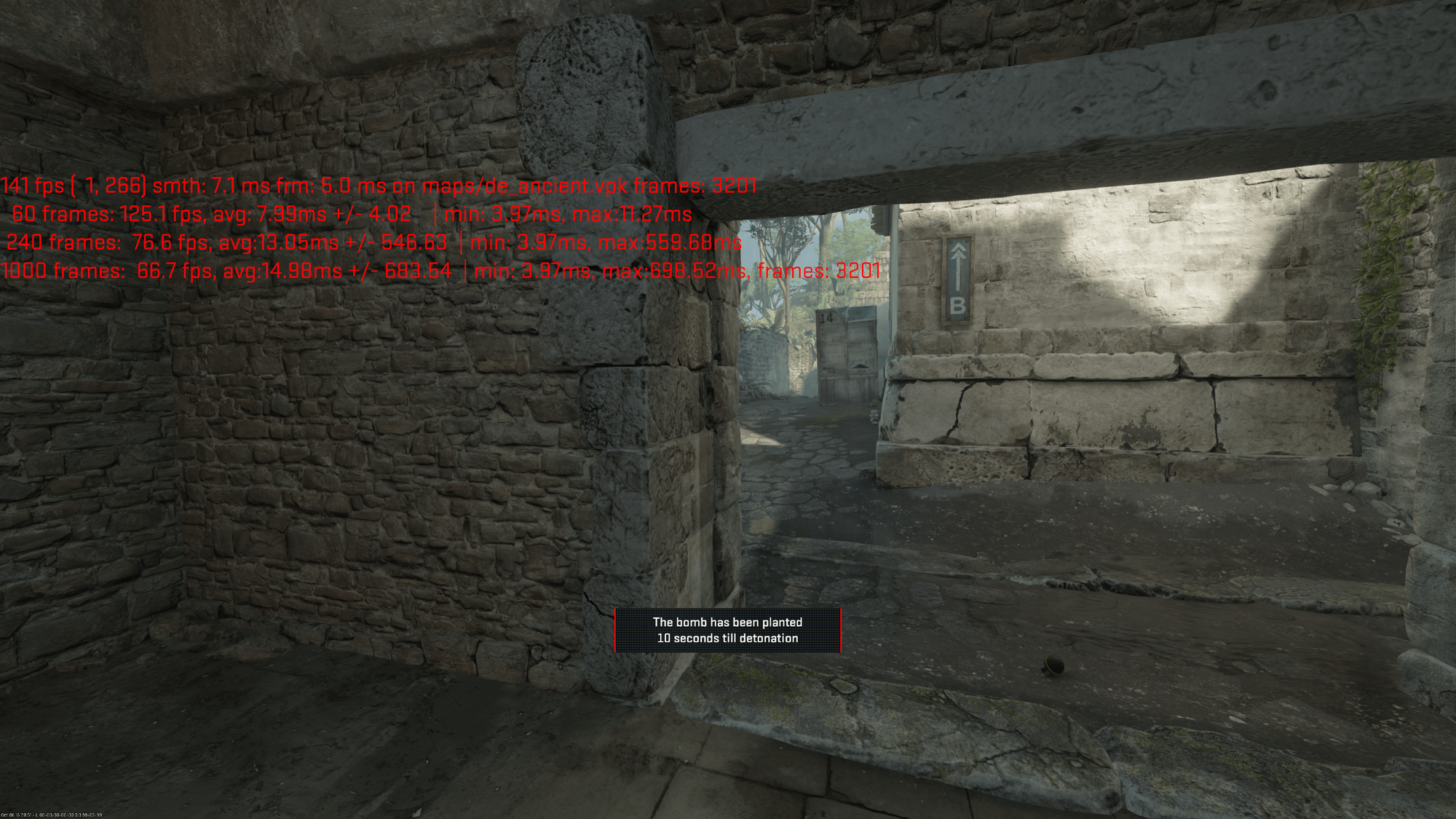

CS2 FPS Benchmark - Screenshots
In short:
- The maps feel familiar but refreshed.
- The gameplay is faster, yet more polished.
- The visuals are modern but still Counter-Strike at heart.
It’s like meeting your old college friend who’s now successful, stylish, and still somehow the same person you remember.
Final Thoughts
So, here’s the bottom line:
Running Counter-Strike 2 on Linux (through Steam) was a complete success.
- Installation? Simple.
- Performance? Excellent.
- Compatibility? Flawless.
- Fun factor? Through the roof.
It’s fascinating how far gaming on Linux has come. Ten years ago, this kind of experience would’ve required dual-booting or sacrificing small animals to the compatibility gods. Now, it’s just “click, install, play.”
Valve’s ongoing work on Proton has made it possible to run AAA games on Linux with almost native performance—and CS2 is a shining example.
As I exited the match, sweaty palms and all, I couldn’t help but smile.
The same thrill that got me hooked ten years ago was back. Only now, it was sharper, smoother, and gloriously high-resolution.
My old FPS reflexes might be rusty, but hey—at least my Linux machine isn’t.
Conclusion
After BioShock Infinite’s poetic skies, Counter-Strike 2 brought me crashing back to gritty reality—with bullets, smokes, and the occasional grenade-induced panic.
But this time, everything ran perfectly on Linux.
No compromises. No tinkering. Just pure, unfiltered gaming nostalgia wrapped in modern technology.
So if you’re running Linux and wondering whether CS2 is worth the try—trust me, it’s not just worth it.
It’s a must.
Now, if you’ll excuse me, I have another round to lose gloriously.

